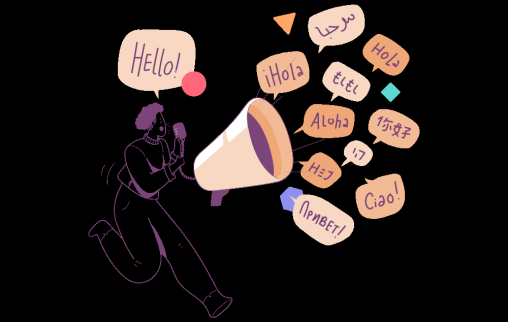5 steps you can take to get rid of your debts
On this page you can read what you can do yourself to get your financial situation back under control.
Step 1: Create an overview of your financial situation
Make an overview of your income, expenses and debts. For this it is important that you open all your mail and accounts. If necessary, ask someone to help you with this.
If you can't pay your debts (in full), you can save money by:
cancel subscriptions,
no more buying new clothes
not going out for a while.
This way you have more money to pay to your creditors.
Are you unable to make this overview? Then contact the social work or social district team of your municipality and ask if they can help you.
For online help with creating a financial overview and a realistic repayment plan, you can go here:
Debt free in 6 steps! - Arrange your debts yourself
Step 2: Make a payment arrangement with your creditor(s)
Contact your creditor and request a payment arrangement. You can propose an amount to repay per month. This may seem scary, but creditors are used to these kinds of questions and you prevent your debt from increasing further.
Please note: the creditor is not obliged to accept your payment arrangement and can reject it or come up with another minimum amount to be repaid.
You can send a calculation of your 'seizure-free foot' to the creditor. Your attachment-free foot is the minimum part of your income that you need to live on. This is legally established.
To calculate this, go to:
If you have agreed a payment arrangement, always ensure that the agreed amount is always on the creditor's account on time.
This is how you prevent:
your payment arrangement is (permanently) stopped,
your creditor takes further steps and charges additional costs for this. These costs can really add up.
The creditor goes to court for a judgment, or to issue a writ of execution. You absolutely want to avoid this. These costs can also add up considerably
Step 3: Get help from a budget manager
If you are unable to make feasible agreements with your creditors, or if you are unable to manage on the money you receive each month, you can ask a budget manager for help.
There are several budget managers where you can sign up. To learn more about budget management, such as where to find a budget manager, click here:
Budget management | Dealing with money and debt | Regulation help
Step 4: Register for debt counseling with the municipality (amicable process/debt rescheduling)
Can you really not pay your creditors (anymore)? Then you can go to the debt counseling service of your municipality. The debt counselor then tries to start an 'amicable process' and to make agreements with your creditors about paying your debts.
There are two methods of debt counseling provided by the municipality:
debt mediation
With debt mediation, your debt counselor will contact your creditors to make payment arrangements. In a period of 36 months, as much money as possible is set aside to pay your creditors.
Remediation credit
With this form of debt assistance, a loan is provided to you and the creditors are paid immediately with this loan amount. Debt assistance by means of a rescheduling loan is often carried out by the municipal credit or city bank. You must repay the amount plus the interest to the municipality within 36 months.
Step 5: Application for admission to Statutory Debt Rescheduling for Natural Persons (WSNP)
If the proposal from the debt mediation or debt rescheduling is not accepted, then the amicable process has failed. You can then submit a request to the court to be admitted to the Statutory Debt Restructuring Natural Persons (WSNP). Your care provider (often the municipality) will cooperate in drawing up this request and issue a statement stating why the amicable process failed. If the judge then admits you, you will end up in the statutory debt rescheduling process.
In principle, a WSNP process lasts three years, but in special cases this can be extended to five years. During that time, an administrator checks whether you fulfill your obligations. If you have kept the agreements properly, you will have a clean slate after three (or five) years. This means that creditors can no longer claim the residual debt and you no longer have to pay the remaining outstanding debts.
Conditions for eligibility for WSNP:
You are unable to get out of financial problems yourself and the help from the municipality has not solved anything either.
Your debts were not caused by fraud, a crime or irresponsible behavior.
You have not been in the WSNP in the past ten years.
You are willing to comply with the obligations of the law.
You are willing to put in three or five years to pay back the creditors.
Here you will find the website of Debt Restructuring Netherlands:
Useful websites
On this website you can find a handy scan and fill-in tool for making a realistic repayment plan yourself. This website is brought to you by the NIBUD (National Institute for Budget Information):
Here you will find the website of Debt Restructuring Netherlands. You can find more information about applying for a WSNP trajectory on this website:
You can use the following link to check your seizure-free foot yourself:
If you want to have your attachment-free foot officially calculated by the tax authorities, you can use the link below:
On this website you can find more information about budget management, including addresses of budget managers. This website is provided by the Ministry of Health, Welfare and Sport:
Via the link below you can watch a short video explaining exactly how a WSNP process works. This is offered by the Legal Aid Council.







































